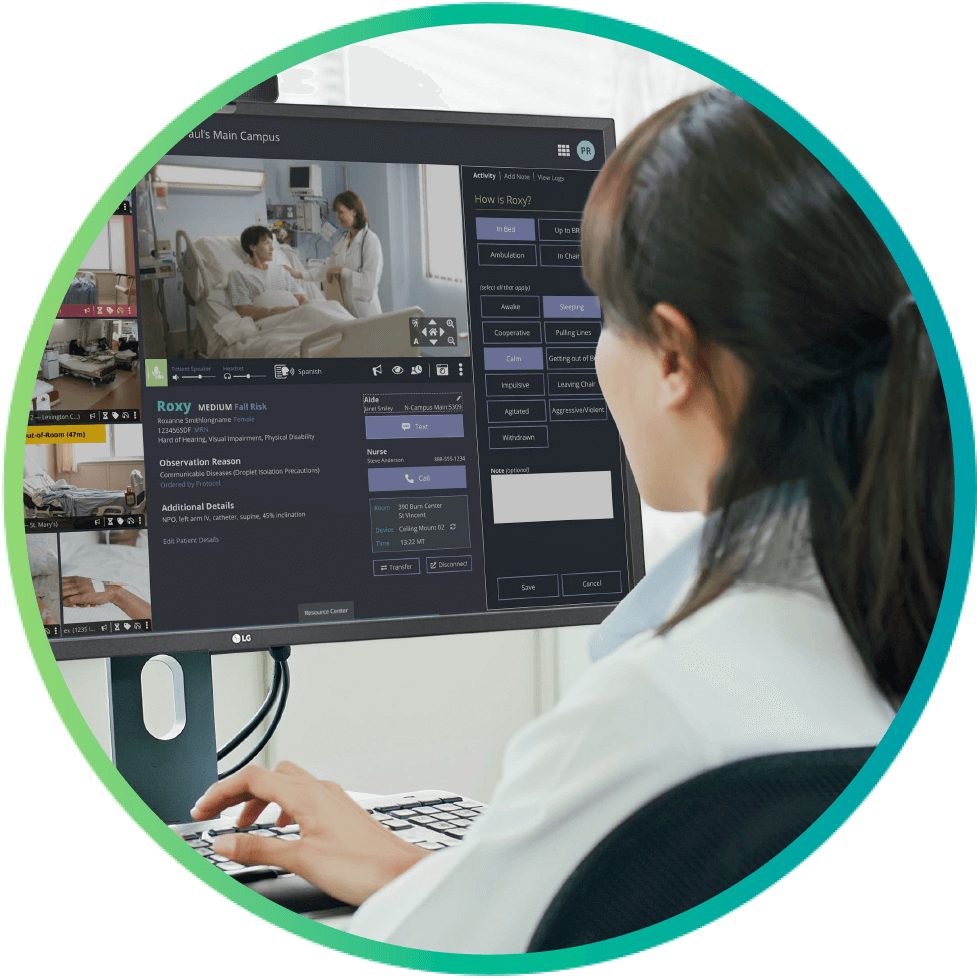2.5 Million Patients Acquire a Preventable HAPI Each Year.
HAPIs (Hospital Acquired Pressure Injuries) Are Bad for Everyone
Patients
- Causes 60,000 deaths per year
- Lowers patients’ quality of life
- Prolongs recovery times
Nurses
- Causes 60,000 deaths per year
- Lowers patients’ quality of life
- Prolongs recovery times
Healthcare Organizations
- Causes reputational harm
- Increases risk of litigation
- Costs organizations $20,900 to $151,00 per patient
HAPI Prevention Doesn’t Have to Be Difficult!
Our Virtual Observation Solution Automates HAPI Monitoring

HAPI monitoring is part of our human-centered AI technology recording patient information and notifying nurses when patients are at risk.

Why Use Automated HAPI Monitoring?

How Collette Health’s HAPI Monitoring Works
In-room cameras provide continuous monitoring of your patients.
Human-centered AI technology analyzes data obtained from patient monitoring.
The solution automatically documents patients’ positions at regular intervals. Costs organizations $20,900-$151,700 per patient.
The solution alerts nursing staff if a patient remains in the same position too long.
In-room cameras provide continuous monitoring of your patients.
Human-centered AI technology analyzes data obtained from patient monitoring.
The solution automatically documents patients’ positions at regular intervals. Costs organizations $20,900-$151,700 per patient.
The solution alerts nursing staff if a patient remains in the same position too long.
Learn more about pressure injury prevention and how our technology supports your efforts with our blog.
HAPI Monitoring is Just One Feature of our Virtual Care Platform
Patient and Facility-Facing technology in each patient room.
AI-Augmented Observer-Facing Technology to enhance remote observation
Robust Analytics Technology for long-term proces improvement
Patient and Facility-Facing technology in each patient room.
AI-Augmented Observer-Facing Technology to enhance remote observation
Robust Analytics Technology for long-term proces improvement
FAQs
What are the alternatives to automated HAPI monitoring?
We offer automated HAPI monitoring as a method of reducing the workload that nurses encounter, saving time, and minimizing unnecessary patient encounters, allowing them to focus on healing interventions. Our technology uses AI to automatically track patient movement and alert staff when repositioning is needed, ensuring efficient use of nurse’s time.
How does Collette Health’s HAPI Monitoring work?
Does automated HAPI monitoring help nurses document more efficiently?
Does automated HAPI monitoring prevent pressure injuries?
How expensive is HAPI monitoring?
How can I integrate Collette Health’s HAPI Monitoring into my existing care processes?
If you’re not using our virtual observation solution, getting set up is easy! We’ve helped facilities deploy virtual monitoring in under two weeks. Contact our team and learn how your nurses and patients can see the benefits of our automated HAPI monitoring solution.
Your patients don’t have to beat a risk of preventable HAPIs! Schedule a demo today.
Not Ready for a Demo?
